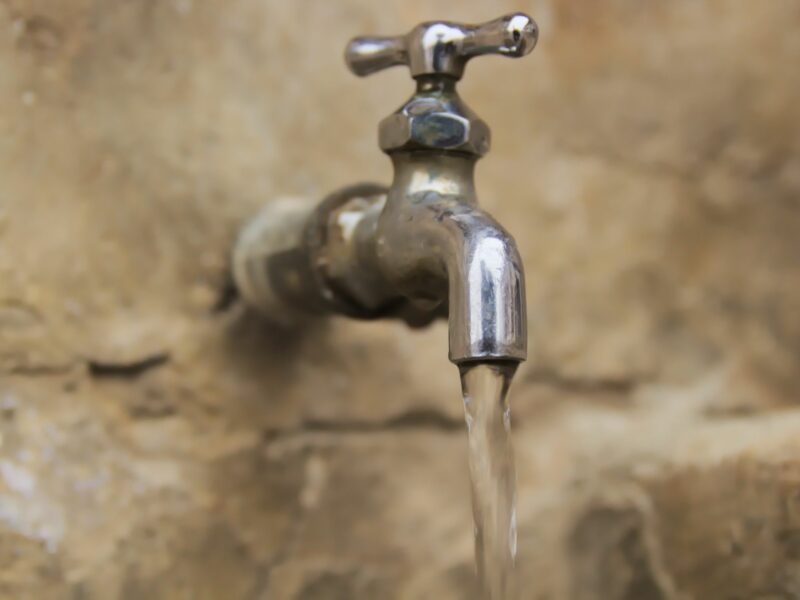Barbados’ karst landscape means few above-ground streams and rivers
Originally published on Global Voices

Feature image via Canva Pro.
This story was first published on Cari-Bois Environmental News Network. A version of the post appears below as part of a content-sharing agreement.
By Kyle Foster
In an attempt to address issues of water scarcity in Barbados, the Green Climate Fund (GCF) is currently co-financing (USD $27.6 million) the countrywide Water Sector Resilience Nexus for Sustainability in Barbados (WSRN S-Barbados) project.
Valued at an estimated USD $45.2 million, the project aims to help Barbados’ water supply become more sustainable and resilient by incorporating renewable energy into systems, promoting rainwater harvesting, and raising awareness of how the island’s water is affected by climate change.
With an expected completion date of April 16, 2024, the project is just one of many efforts being undertaken by Barbadian authorities to improve the resilience of the country’s water resources.
Understanding Barbados’ water scarcity
Fresh water is important for health and wellness which makes it a key resource. Given its extensive karst landscape, Barbados has few above-ground streams and rivers, which contributes to a scarcity in its freshwater supply.
As such, more than 80 percent of the island’s fresh water is sourced from underground aquifers, which consist of thin lenses of fresh water floating above salt water. This fresh water is accessed by pumping wells and is withdrawn with careful measures in place to avoid over-pumping and saltwater intrusion, which occurs when salt water moves into fresh water.
If the quality of the water becomes too saline, the aquifer can no longer be used as a source of fresh water and would even have to be abandoned.
The Barbados Water Authority (BWA) follows the World Health Organisation’s drinking water standards, where more than 250 milligrams of chloride per litre in the water would deem it unusable.
Climate change and saltwater intrusion on limited freshwater resources
In recent decades, climate change has led to Barbados facing rising sea levels, extreme weather events, coastal erosion, warmer temperatures, and changing precipitation patterns.
In a primer for local decision makers, Canada’s Prince Edward Island Department of Environment noted that these factors increase the demand for fresh water and the risk of saltwater intrusion.
BWA hydrogeologist Jaime Paul said the risk of saltwater intrusion is high in aquifers along Barbados’ west coast because of the low-lying topography of the area. Some communities in this area are already experiencing varying levels of saltwater intrusion, but as the rate of climate change continues to accelerate, it is expected that more of the island’s water resources will be affected.
With climate-induced droughts, there is a reduced probability of the island’s aquifers being recharged by sufficient rainfall. The effects of limited rainfall are also exacerbated by land development. Surfaces across Barbados that were once permeable are now paved over, which will ultimately prohibit ground infiltration, and the recharging of aquifers, with already limited precipitation.
What's being done at the community level
As Barbados looks forward to managing greater saltwater intrusion, authorities are engaged in efforts to bring more awareness to sustainable water management practices.
It is also critical that communities find ways to better conserve and manage water resources. Paul suggested that Barbadians can make adjustments in their daily lives by simply being conscious of the clothes they wear. Using clothes made of materials that are more suited to a tropical climate can mean sweating less and getting a few more wears in before having to wash them.
Making efforts to be more water conscious at home — like turning off the tap when brushing one’s teeth or installing more water-efficient toilet tanks — can also assist with conserving water.
What's being done at the national level
Nationwide, efforts are being made to sensitise Barbadians about the importance of shifting from solely conserving water to storing it, which would be useful during periods of low rainfall.
The BWA launched its Personal Tank Programme (PTP) in 2017, which supplies 400-gallon tanks to those unable to purchase their own. This helps those living in areas affected by drought create a reliable method of water storage.
As part of the GCF’s project, the BWA has been able to provide portable tanks to supply households, schools and businesses, and to improve outdated infrastructure in order to build the island’s resistance to climate change.
While considerations can be made to build additional desalination plants on the island, this is an expensive solution. Future infrastructural development must also consider the permeability of the surfaces being used, to prevent flooding and avoid losing water to runoff.
With accelerated rates of climate change, the probability of Barbados’ already scarce water resources being further strained is a reality, creating an even more pressing need for the island’s existing water resources to be used in ways that are more sustainable.
Post a Comment